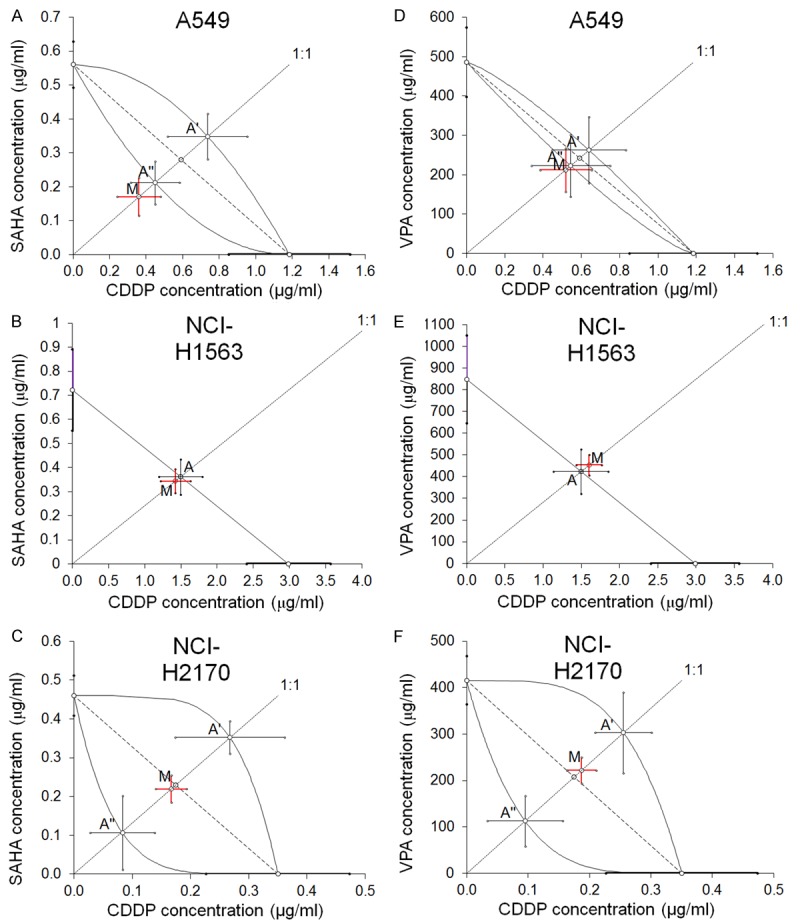Figure 3.

A-F. Isobolograms showing additive interactions between CDDP, SAHA and VPA with respect to their anti-proliferative effects on three cancer cell lines (A549, NCI-H1563 and NCI-H2170) measured in vitro by the MTT assay. The median inhibitory concentrations (IC50) for CDDP, SAHA and VPA are plotted graphically on the X- and Y-axes, respectively. The solid lines on the X and Y axes represent the S.E.M. for the IC50 values for the studied drugs administered alone. The lower and upper isoboles of additivity represent the curves connecting the IC50 values for CDDP and SAHA or VPA administered alone. The dotted line starting from the point (0, 0) corresponds to the fixed-ratio of 1:1 for the combination of CDDP with SAHA or VPA. The diagonal dashed line connects the IC50 for CDDP and SAHA or VPA on the X- and Y-axes. The points A’ and A” (A, C, D, F) depict the theoretically calculated IC50 add values for both, lower and upper isoboles of additivity. The point A (B, E) depicts the theoretically calculated IC50 add value. The point M represents the experimentally-derived IC50 mix value for total dose of the mixture expressed as proportions of CDDP and SAHA or VPA that produced a 50% anti-proliferative effect (50% isobole) in three cancer cell lines (A549, NCI-H1563 and NCI-H2170) measured in vitro by the MTT assay. On the graph, the S.E.M. values are presented as horizontal and vertical error bars for every IC50 value. The experimentally-derived IC50 mix value is placed close to the points: A” (A, D), A (B, E) and within the area bounded by two lines of additivity (C, F), indicating additive interaction between CDDP and SAHA or VPA in three cancer cell lines (A549, NCI-H1563 and NCI-H2170) measured in vitro by the MTT assay.
